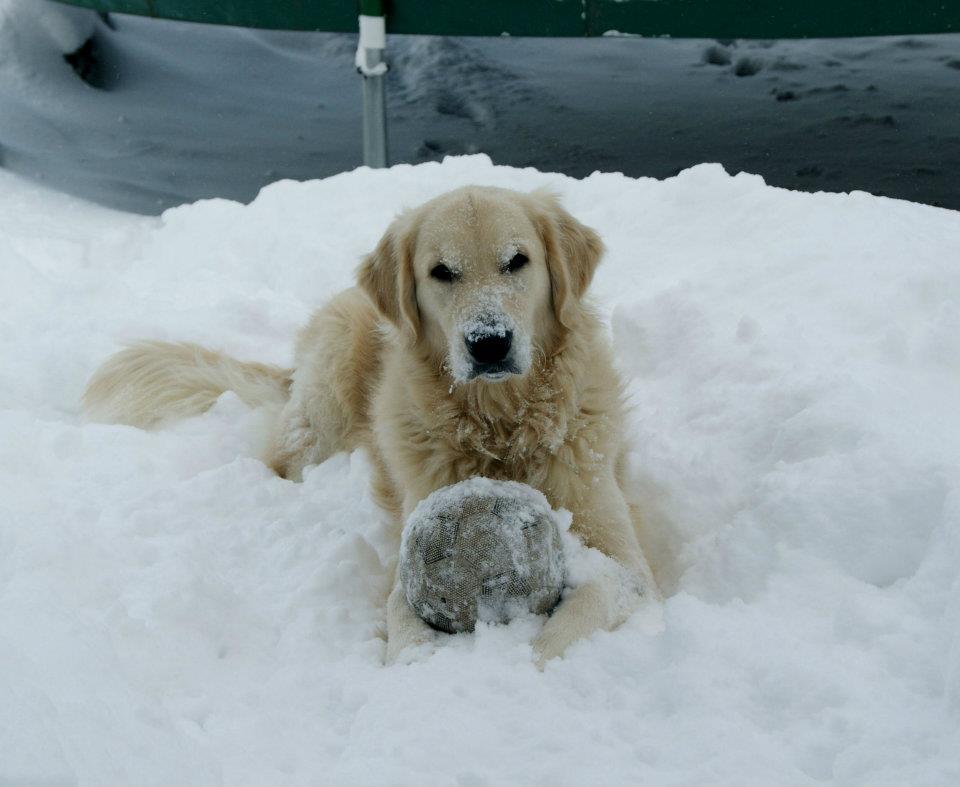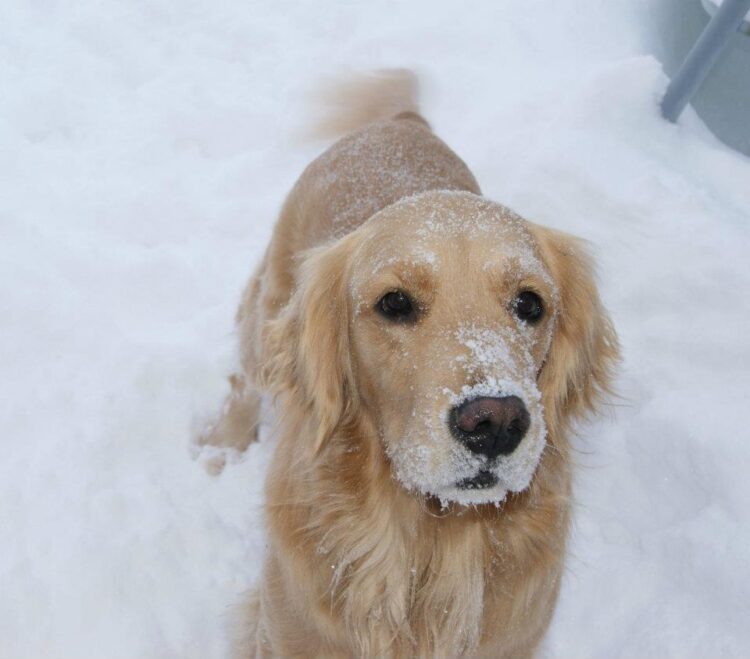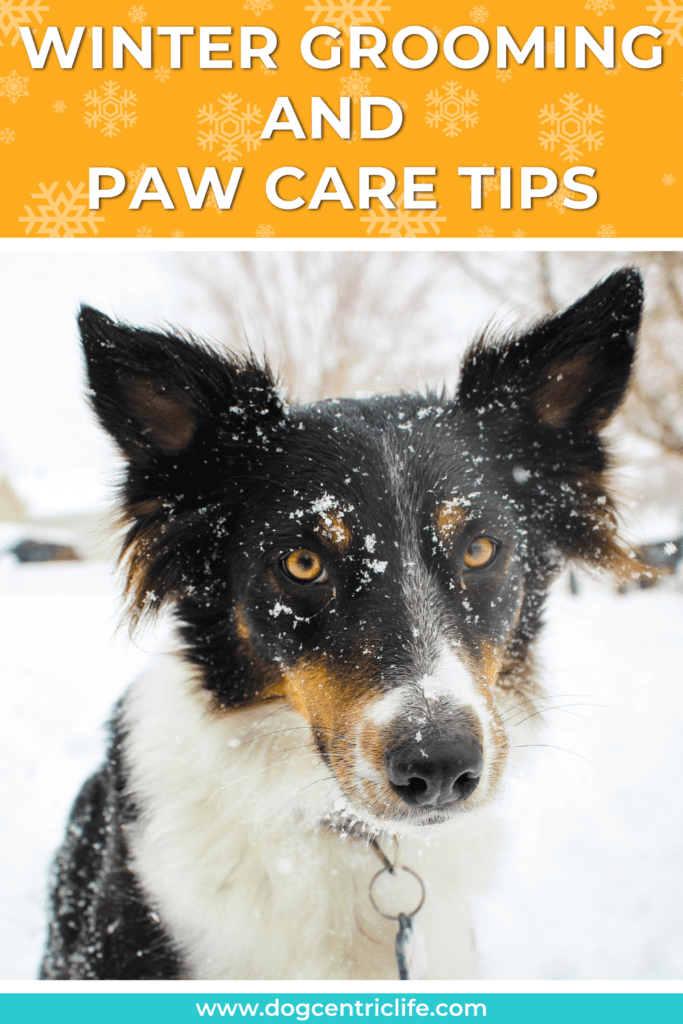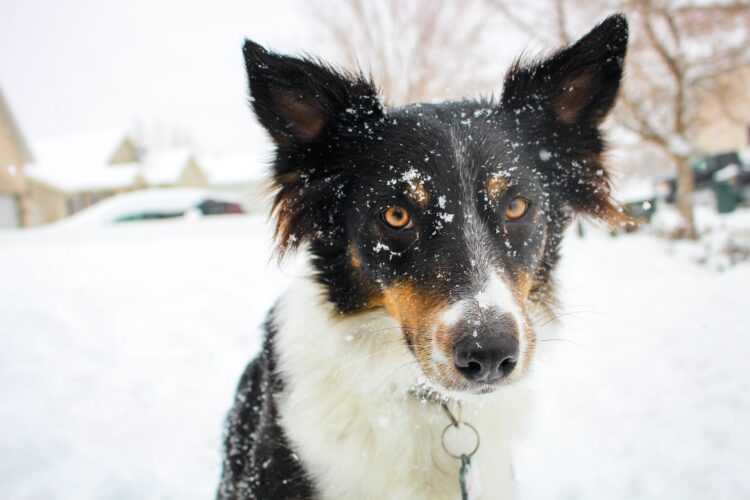Winter can be extreme depending on your location, and for us, in Canada, the snow, cold temperatures and ice can present challenges for both people and dogs alike. The low humidity that often comes with the colder temperatures, along with the snow, ice, salt and other de-icing chemicals can be hard on dogs… in particular, their paws and skin. Just like us, winter means we need to take a little more time, and care, to ensure that we, and our dogs, are healthy and comfortable during the colder season. So let’s discuss some winter grooming tips.
But first, when I woke up this morning to snow… after being out in T-shirts last week… my mind wandered to memories of both Ollie and Jorga, as they loved to “go out in the snow to play”… and wrestle! If you were to ask them how they felt about the snow they would have undoubtedly said… “the more snow, the better!”


Ok, time to re-focus and get back to it… just had to share!
OhHH, the weather outside is frightful…
With the colder weather – if you happen to live in such a climate – your dog will obviously be exposed to the harsh, winter elements. Cold air, snow and ice can cause dry, itchy skin, as well as cracked and sore paw pads, which can make walks uncomfortable for your dog.
A real winter hazard for your dog is all the sidewalk and road salt, along with other ice-melters. These products, depending what they are, can actually cause burns to your dog’s paw pads… never mind what can happen if they lick these products off their paws after your walks.
But, rest assured, there are products out there that can help to protect your dog, and their paws, from the elements this winter… some are easy DIY projects that you can do at home.
Basic WINTER GROOMING Tips
Grooming is an important part of keeping your dog healthy all year round, but in the winter there are some specific things you should pay extra attention to… for your dog’s sake.
If you have a dog that has furry feet, and if you haven’t looked, they likely have fur that grows between their paw pads, as well as what you see around their feet. This fur should be trimmed… but I would strongly recommend that you have your veterinarian or groomer show you how to do this safely to avoid accidentally cutting the delicate skin between their toes. Keeping this fur short reduces the snow and ice balls that accumulate on their paws and between their pads and toes… which can be very uncomfortable. If your dog has ever been outdoors in the winter and then you notice them limping… it’s very likely this is the cause. As well, trimming that fur will reduce the amount of salt or de-icing product that is picked up on their paws.
As always, keep your dog’s nails trimmed to a proper length as it makes walking much easier for them… and it reduces the health risks that come from nails that are too long. Brushing your dog on a regular basis (this requirement varies from breed to breed) helps to get rid of dead hair – you know, the dog hair that’s all over the couch, the floors, your clothes and everywhere else! – but it also helps to stimulate the skin’s oil-producing glands thus moisturizing their skin. Like you, your dog’s skin can get dry with low-humidity levels that comes along with the winter temperatures. You put lotion on so that your hands aren’t like sandpaper… well, brushing your dog works, more or less, the same way. The best routine for winter is to reduce bathing (as this can dry their skin) and brush them more frequently to help to increase the natural oils which moisturize their skin.
Keep their paws clean & DRY
After your walks it’s a good idea to thoroughly wash and dry your dog’s paws to remove any de-icing chemicals or salts that may have picked up on their paws. Not everyone uses pet-friendly products on their sidewalks! While you’re doing this take a moment or two to inspect their paws for any cracks, sores or redness. Catching those early can head off more serious issues down the road if they’re missed. Once their paws are clean… and dry (don’t forget between their toes)… you can apply a paw balm to their pads to help soothe and moisturize… which will help with any minor rough spots or cracks. Oh, this is important… don’t use moisturizers made for humans as they could be toxic for your dog! Only use dog-safe products… or try your hand and make your own (see the next section).
DIY PAW BALM FOR YOUR DOG
If you’d like to try to make a paw balm for dog, here’s a recipe from the Ontario SPCA website that you can try. Or, if you aren’t a DIY’er, there are plenty of pre-made paw balms available for purchase online or at your local pet store.
Ingredients
- 2 oz. (approx. 2 tbsp.) olive oil
- 2 oz. (approx. 2 tbsp.) coconut oil
- 1 oz. (approx. 1 tbsp.) shea butter *
- 4 tsp. beeswax
* Note: be sure to use shea butter and not cocoa butter, as cocoa butter can be a potential toxin for dogs.
Directions
In a small pot, over low heat, melt the olive oil, coconut oil, shea butter and beeswax. Stir continuously until completely melted and well blended.
Pour the mixture into tins or glass containers that you have chosen for storage. Let cool until hard and then place the lid on the container. Keep away from extreme heat when storing.
Apply the balm as a preventative measure… or to help with softening dry, cracked pads or noses. This product should be used within 1 to 2 years.
Paw protectors
Another option is to try dog boots… or paw protectors… as they will help to keep harmful chemicals and products away from your dog’s feet. They’ll also help keep their feet a little warmer, give them more traction and provide more overall comfort from the harsh elements.
Here’s a great video from the Ontario SPCA about how to fit your dog for winter boots…. and some tips to help introduce your dog to the idea of wearing them… using positive techniques!
To add to this… if you have a small dog, or a dog that has a thin coat, be sure they are warm this winter with a sweater, or better yet, a winter jacket that repels the elements. I am sure you don’t like to be outside if you aren’t dressed for the cold… your dog is no different. Quite frankly, the dog fashion industry is booming so you should be able to find something that suits yours, and your dog’s, style.
Winter – with all that comes with it – can be rough sometimes, but hopefully these tips and tricks will help you and your dog get through the season in an enjoyable, and safe manner. And, if you are prepared, then, in the words of Frank Sinatra: Let it snow, let it snow, let it snow.
Happy winter!








0 Comments